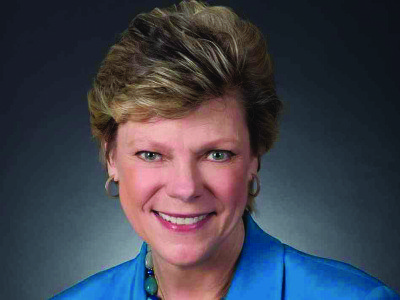 “There will never be anything more interesting in America than your Civil War.” So proclaimed the expatriate writer, Gertrude Stein, from her literary salon in Paris. Which indeed looks to be the case. Over 100,000 books have been published on the war, and with each year, that number marches that much higher.
“There will never be anything more interesting in America than your Civil War.” So proclaimed the expatriate writer, Gertrude Stein, from her literary salon in Paris. Which indeed looks to be the case. Over 100,000 books have been published on the war, and with each year, that number marches that much higher.
Now, longtime political commentator Cokie Roberts has published her unique take on the great conflict. Capital Dames is about more than gossip and political intrigue in Washington before, during and after the war, it also examines the impact the war had on both the role of women in American society and the changing status of the nation’s capital.
As the daughter of a father and mother who both, at different time periods, represented a New Orleans district in Congress, Cokie Roberts grew up in Washington during the 1950s and ’60s at a time when the enormous effects of World War II had also transformed that city. But the changes wrought on American society by the Civil War also grabbed her imagination. Roberts is the author of Founding Mothers and Ladies Of Liberty, both of which examine the roles women played in the Founding Era. Capital Dames represents both an extension of those books and a topic that had long been on the author’s mind.
Research for the book came up with the usual surprises. With digital technology, Roberts was able to read news reports from the war in real time. The letters the women wrote, plus the reporting style of that era, proved endlessly fascinating. Even the news stories, Roberts recalled, were written in “very flowery language.” Moreover, the literacy of the letter writers, whether they were well-educated women or common soldiers, has never ceased to amaze Civil War-era scholars.

Capital Dames captures the drama of secession, war and reconciliation, symbolized by the construction of the long-delayed Washington Monument in 1884. Its pages are filled with the exploits of spies, hostesses, First Ladies, seamstresses, nurses, relief workers and journalists. Among the famous, once-famous and obscure women profiled on its pages include Dolley Madison, Eliza Hamilton, Jessie Benton Fremont, Adele Cutts Douglas, Dorothea Dix, Rose O’Neal Greenlaw, Varina Davis, Elizabeth Hobbs Keckley and Elizabeth Lee Blair.
Mostly, the book is about social change. World War II, as the author notes, is famous for Rosie the Riveter and the contributions made by working women to the war. The Civil War was similar. Prior to the war, Washington was very much a society town. A woman who made her name as a belle or a hostess was important. As the war progressed, women began taking a more active role in both administrative and political duties. The suffragette movement became more pronounced. And even though it would take several more decades, the franchise was eventually granted to women voters.
Among the many notable women that Roberts researched, several stood out. Clara Barton remains memorable for her accomplishments, even though Roberts acknowledged that the famed nurse was “not any fun.” Varina Davis, the First Lady of the Confederacy, also caught the author’s imagination. Roberts discovered a woman who was “fascinating, smart and interesting,” someone whose political acumen, Roberts felt, surpassed that of her husband, Jefferson Davis, the senator from Mississippi, a reluctant secessionist and the president of the Confederacy.
After the war, Davis moved to New York City, where she wrote a newspaper column. It was not uncommon for southerners to seek refuge in a city that had balked, at times violently, at calls for a draft, but the fact that the woman who was First Lady of the Confederacy would do so was considered scandalous. Davis, as Roberts recalled, didn’t care. “I am free, brown and 64,” she tartly remarked to her critics. “I can go anywhere I want.”
Roberts hopes that readers will profit from what she calls a “good story.”
“I hope they enjoy the story of feisty, funny and fascinating women,” she told the Anton Media Group. “It is interesting how the Civil War had affected the place of women and how it had a big difference in the lives of women and life in the city.”
Above all, Capital Dames contributes to Roberts’s own expanding corpus of books about women and their role in the shaping of America.
“One of my missions is to tell women’s history,” she said. “I want to make it more accessible, more popular.”
And with Capital Dames as a successor to Ladies Of Liberty and Founding Mothers, that mission has taken another giant step forward.


















